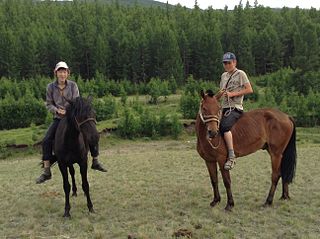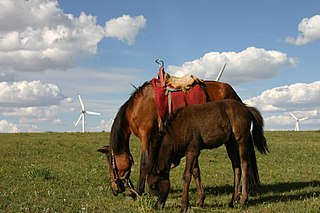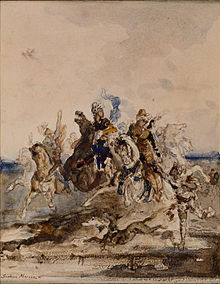
Xerxes I, commonly known as Xerxes the Great, was a Persian ruler who served as the fourth King of Kings of the Achaemenid Empire, reigning from 486 BC until his assassination in 465 BC. He was the son of Darius the Great and Atossa, a daughter of Cyrus the Great. In Western history, Xerxes is best known for his invasion of Greece in 480 BC, which ended in Persian defeat. Xerxes was designated successor by Darius over his elder brother Artobazan and inherited a large, multi-ethnic empire upon his father's death. He consolidated his power by crushing revolts in Egypt and Babylon, and renewed his father's campaign to subjugate Greece and punish Athens and its allies for their interference in the Ionian Revolt. In 480 BC, Xerxes personally led a large army and crossed the Hellespont into Europe. He achieved victories at Thermopylae and Artemisium before capturing and razing Athens. His forces gained control of mainland Greece north of the Isthmus of Corinth until their defeat at the Battle of Salamis. Fearing that the Greeks might trap him in Europe, Xerxes retreated with the greater part of his army back to Asia, leaving behind Mardonius to continue his campaign. Mardonius was defeated at Plataea the following year, effectively ending the Persian invasion.

Darius I, commonly known as Darius the Great, was a Persian ruler who served as the third King of Kings of the Achaemenid Empire, reigning from 522 BCE until his death in 486 BCE. He ruled the empire at its territorial peak, when it included much of Western Asia, parts of the Balkans and the Caucasus, most of the Black Sea's coastal regions, Central Asia, the Indus Valley in the far east, and portions of North Africa and Northeast Africa including Egypt (Mudrâya), eastern Libya, and coastal Sudan.

Immortals or Persian Immortals was the name given by Herodotus to an elite heavy infantry unit of 10,000 soldiers in the army of the Achaemenid Empire. The unit served in a dual capacity through its role as imperial guard alongside its contribution to the ranks of the Persian Empire's standing army. While it primarily consisted of Persians, the Immortals force also included Medes and Elamites. Essential questions regarding the historic unit remain unanswered because authoritative sources are missing.

Cyrus II of Persia, commonly known as Cyrus the Great, was the founder of the Achaemenid Persian Empire. Hailing from Persis, he brought the Achaemenid dynasty to power by defeating the Median Empire and embracing all of the previous civilized states of the ancient Near East, expanding vastly and eventually conquering most of West Asia and much of Central Asia to create the world's then-largest polity. The Achaemenid Empire's largest territorial extent was achieved under the rule of Cyrus' successor Darius the Great, whose rule stretched from the Balkans and the rest of Southeast Europe in the west to the Indus Valley in the east.
Scylax of Caryanda was a Greek explorer and writer of the late 6th and early 5th centuries BCE. His own writings are lost, though occasionally cited or quoted by later Greek and Roman authors. The periplus sometimes called the Periplus of Scylax is not, in fact, by him; that so-called Periplus of Pseudo-Scylax was written in about the early 330s BCE by an unknown author working in the ambit of the post-Platonic Academy and/or the Aristotelian Peripatos (Lyceum) at Athens.

The Massagetae or Massageteans, also known as Sakā tigraxaudā or Orthocorybantians were an ancient Eastern Iranian Saka people who inhabited the steppes of Central Asia and were part of the wider Scythian cultures. The Massagetae rose to power in the 8th to 7th centuries BCE, when they started a series of events with wide-reaching consequences by expelling the Scythians out of Central Asia and into the Caucasian and Pontic Steppes. The Massagetae are most famous for their queen Tomyris's alleged defeating and killing of Cyrus, the founder of the Persian Achaemenid Empire.

The Royal Road was an ancient highway reorganized and rebuilt by the Persian king Darius the Great of the first (Achaemenid) Persian Empire in the 5th century BC. Darius I built the road to facilitate rapid communication on the western part of his large empire from Susa to Sardis. Mounted couriers of the Angarium were supposed to travel 1,677 miles (2,699 km) from Susa to Sardis in nine days; the journey took ninety days on foot.

The Caspian is an Iranian breed of pony or small horse of Oriental type.
The Nisean horse, or Nisaean horse, is an extinct horse breed, once native to the town of Nisaia, located in the Nisaean plains at the foot of the southern region of the Zagros Mountains, Iran.

The Java pony is a breed of pony developed on the island of Java in Indonesia. It is thought to have descended from wild forebears of Mongolian Wild Horse ancestry. It is larger and stronger than the Timor pony, with more Arabian breed influence.

The Achaemenid Empire or Achaemenian Empire, also known as the First Persian Empire was the ancient Iranian empire founded by Cyrus the Great of the Achaemenid dynasty in 550 BC. Based in modern-day Iran, it was the largest empire the world had ever seen at its time, spanning a total of 5.5 million square kilometres. The empire spanned from the Balkans and Egypt in the west, West Asia as the base, the majority of Central Asia to the northeast, and parts of South Asia to the southeast.

The Scythian campaign of Darius I was a military expedition into parts of European Scythia by Darius I, the king of the Achaemenid Empire, in 513 BC. The Scythians were an East Iranian-speaking people who had invaded Media, revolted against Darius and threatened to disrupt trade between Central Asia and the shores of the Black Sea as they lived between the Danube and Don Rivers and the Black Sea. The campaigns took place in parts of what is now the Balkans, Ukraine, and southern Russia.

The Tuva is a breed of small saddle horses native to the Tuva region of Russia. Classified among the "Siberian pony" family, it proves to be much closer to the Mongolian horse, having lived relatively isolated from other Asian and Eastern European horses. It has long been ridden by the nomadic horse riders of its region, for breeding and hunting. At the end of the 19th century, mineral extraction led to the import of draft horses and saddles, giving rise through crossbreeding to the Upper Yenisei horse, now very rare, and the Tuva carriage horse, now extinct.

The Tushetian is a breed of small saddle horses native to Tusheti, Georgia. It is probably the result of ancient selection, marked by harsh environmental conditions, under the influence of Arabian and Turkoman horses. Small in size, the Tushetian is known for its resistance, its adaptation to its mountainous region, and its ability to move at the amble gait. Historically, they were mainly ridden for farm work with sheep, and covered for off-road mountain transport. A rare breed, it is very local and could be threatened with extinction. Protection measures have been recommended in order to preserve it, notably because of its genetic heritage.

The Chinese Mongolian is a breed of horse, corresponding to the population of Mongolian horses that remained in China after Mongolia's independence in 1910. Possibly descended from Przewalski's horse, it has been domesticated since ancient times. In 1982, they accounted for a third of all horses in China. Since then, their numbers have declined sharply, under the influence of mechanized transport and modern lifestyles.
Saklawi, Seglawi or Siglavy in Central Europe, is one of the five mythical Arabian horse bloodlineages recognized as pure by the Bedouins, the Al Khamsa. Selected by the Ruwallah and Anizah, two nomadic tribes of the Arabian Desert, this lineage was imported to Egypt several times in the 19th and 20th centuries, and is still bred today in Saudi Arabia and Iran.

Koheilan is one of the five major bloodlines of the Arabian thoroughbred horse recognized by the Bedouins, the Al Khamsa. Of tall stature and strong constitution, it owes its name to the beauty of its eyes, set against a black skin that seems naturally enhanced with kohl. The existence of the Koheilan lineage is recounted by the Ottoman traveller Evliya Çelebi in the 17th century, then by the Polish count Wacław Seweryn Rzewuski in the 18th century, who provides a detailed description. He held the horses of the Arabian Najd in the highest esteem, and acquired them for his stud farms. The Koheilan line was widely exported to Central and Eastern Europe, as well as to Russia, where it influenced numerous breeds such as the Najd and Tersk. It has produced the majority of Polish Arabian horses that win endurance ridings.
The Chernomor is a Russian breed of saddle horse originating from the Krasnodar Krai and Rostov Oblast, near the Black Sea in Russia. The Chernomor was originally bred from crosses between the mounts of Zaporozhian Cossacks and Kazakh nomads in the late 18th century. The breed was then influenced by crosses with various saddle horses, such as the Russian Don and the Karabakh. After the World War I, Chernomor breeding was weakened and merged with that of the Budyonny breed.
The Cuban Paso is a horse breed native to Cuba, with an extra gait like all Paso horses.

The Dareshuri is a horse breed native to the Fars province in southern Iran. It is bred there by the Dareshuri tribe who crossbreed it with the Persian Arabian. Belonging to the Persian plateau horse group, it is a large horse compared to neighboring Arabian types. In the absence of pedigree evidence for many of the breed's representatives, the Dareshuri is not recognized as an Arabian thoroughbred, as its morphology is slightly different. With fewer than 400 representatives recorded in 2003, it is now a rare breed, threatened with extinction.
















